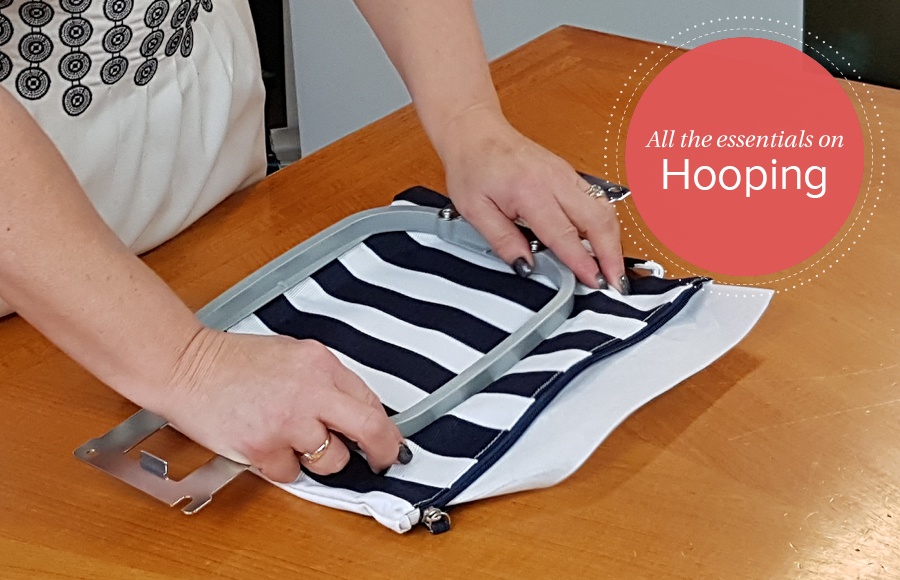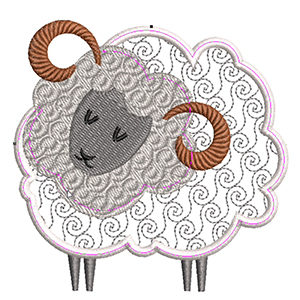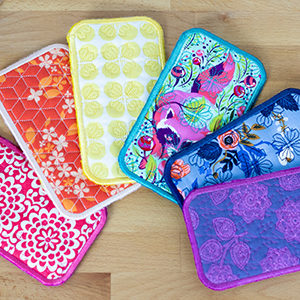All the essentials for great embroidery results

When you are new to machine embroidery, the amount different things you need to learn can get a little daunting. I put together this quick run down on hooping, so you get a good understanding of why it is so important.
Hooping is a Vital Part of Machine Embroidery
You might have a fantastic design that you purchased from someone or created yourself, but if you do not get your hooping right, the embroidery that comes of your machine can still end up very average or even bad.
What is the Purpose of the Hoop?
The hoop holds an even tension on the fabric and prevents it from puckering. This allows the stitches to have an even tension and line up correctly without loose threads. Therefore, when you hoop your fabric, it is very important that it is nice an taut.
Hooping can be a little frustrating, especially if you have perfectionist tendencies. It can get quite fiddly as it requires the handling of loose fabric and multiple layers of stabilizer. If it is not done properly, improperly hooped pieces can lead to all kinds of frustrating issues like puckering, misalignment and uneven stitches.

Stabilizers
Using stabilizers for machine embroidery is necessary to add stability to the fabric and hold it in place while it gets stitched. Almost all fabric has a level of stretch, and stabilizers help avoid the push and pull effect of machine embroidery.
Hoop Size
Embroidery machines all have a set of hoop sizes, so make sure you check your machine’s user manual for these measurements. For example, if your hoop size is 6 x 10, any designs you work with will need to be smaller than that when purchasing or creating designs.
Luckily, with Hatch Embroidery, you can select your machine type in the software, and the available hoop sizes will show. You can then select the smallest hoop size that fits your design.

Why the Smallest Hoop?
Using a large hoop for a small design will allow more room for the fabric to move within the hoop which leads to the design not stitching out properly. Therefore, it is best to choose the smallest possible hoop size to fit your design. This will avoid the fabric being dragged in the hoop and ensure your embroidery comes off the machine looking great.
Hoop Burn
A pet peeve of many embroiderers is the dreaded “hoop burn”, where the hoop leaves an imprint on the material. This occurs when the hoop presses too hard into the layers of material and stabilizer underneath it, and its grip smashes the fabric’s fibers down. In most cases, it is easily fixed. Simply re-fluff your fabric by adding a bit of moisture.
One method is to cover up hoops with an elastic wrap to relieve pressure. Hoop wrapping is quite a popular preventative approach, with people using muslin cloths or linen among other fabrics.
Another method you can use to avoid hoop burn on sensitive fabrics, such as velvet, is floating.
Floating
There are certain materials that just will not work with a traditional hoop (denim edges, slippery fabric and delicates), there is another options that can provide a “hooping” effect without needing to use an actual hoop.
Floating is when you only hoop the stabilizer, and place your material on top. It is advised to use a fabric spray adhesive to secure the fabric, or a stick-on stabilizer as this will adhere directly to your fabric and lock it down to ensure little to no movement.
Remember, unhooped fabric becomes very vulnerable to shifting and gapping, so only use this method if you really have to.
Hooping Technique
Remember to ensure that the hoop is fairly snug, it should not be loose. However, make sure you do not stretch the fabric, as this will distort your design. If possible, do a test sew with a similar, or the same, fabric if possible. This way there are no nasty surprises and you will not need to re-do your project.
Watch embroidery expert Leanne Church hoop a toiletry bag.
Conclusion
Hooping is something that embroiderers, especially machine embroiderers, should become very familiar with. Hooping is vital when it comes to producing a final product that meets (or perhaps even exceeds) your expectations, as it prevents all kinds of mishaps. With proper hooping, or hooping substitutes, you will avoid puckering and misalignment, and your designs will turn out exactly the way you were hoping.
Hatch Embroidery software products are in popular use in over 100 countries. It is time to join the global trend and give Hatch a try! The 30-day Free Trial grants you unlimited use of all the amazing features and the 30-day Money Back Guarantee ensures that there is absolutely no risk involved.
Did you find this article useful? We’d love to hear your feedback!










